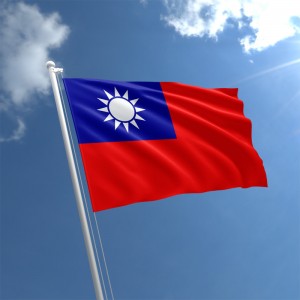Even at this juncture, when tensions are elevated, the Communist Party’s Youth League called for restraint and not to sacrifice the entire chessboard for one piece (Taiwan).
Xi Jinping’s ascendance as the General Secretary of the People’s Republic of China (PRC) in 2012 triggered a change in the overall approach of the PRC’s dealings with domestic and international issues. At the 19th Party Congress, he explicitly defined the recovery of territories lost to “unequal treaties” as a major goal
This state of affairs is conveyed through the multiplicity of authoritative voices coming from China. In a speech in February 2021, PLA Major General Jin Yinan mentioned Taiwan as a potential flashpoint for future conflict for China. The same warning, along with the mention of reunification, was voiced by Wu Qian, spokesperson of the PLA and the People’s Armed Police Force delegation to the 4th session of the 13th NPC in March 2021.
Similarly, in July 2021, the Chinese magazine, “Naval and Merchant Ships”, published a detailed outline of a three-stage surprise attack that could pave the way for an assault landing on Taiwan. An accompanying video was also posted on social media platform Weibo, with the message “we must solemnly warn some people that the road of Taiwan independence only leads to a dead end”.
However, an important and contrasting essay by Cui Lei, Research Fellow at the China Institute of International Studies, a think-tank affiliated with the Ministry of Foreign Affairs, on 26 February 2021 highlighted that Mainland China was in no position to take Taiwan by force. Firstly, domestic political risks are high, in the event of an unsuccessful show of force. Secondly, in the context of the 20th NPC (2022), Xi Jinping needs a stable domestic political environment to ensure the extension of his term as General Secretary of the Communist Party. Brinkmanship towards an incursion may risk domestic stability, provoke public discontent, and stir backlash that could scuttle his leadership.
Echoing similar sentiments, an important interview was published in the South China Morning Post on 4 May 2021 of retired PLAAF Major General Qiao Liang, co-author of the book “Unrestricted Warfare” and a Chinese foreign policy “hawk”, who warned that the coronavirus pandemic should not be seen as a chance for Beijing to take back Taiwan by force. Qiao Liang said while a move to take Taiwan by force may not prompt Washington to declare war, it could join forces with its allies in the region to use their sea and air advantages to cut off Beijing’s maritime lifeline in the South China Sea.
Even at this juncture, when tensions are elevated, the Communist Party’s Youth League called for restraint and not to sacrifice the entire chessboard for one piece (Taiwan). Of course, when someone pokes the Chinese with the Taiwan question, they feel the sting. However, the US and China should not let the situation go out of hand and embark on a military confrontation sacrificing years of efforts building the strategic partnership.
After analysing a few illustrations of the Chinese leadership, academicians, PLA veterans and so on, one thing is clear that there is no uniform view on Taiwan. The aggressive voices within the government and armed forces have increased due to the timetable laid by President Xi at the 19th Party Congress (October 2017) and tying up national rejuvenation with the recovery of lost territories. This has been further aggravated by the Sino-US trade war, which started after the announcement of this bold timetable (Made in China, 2035 and China as a Global Power, 2049) by the Chinese President and non-compliance by the ruling DPP in Taiwan for the 1992 consensus.
The only common thread is that all these players consider Taiwan as an inalienable part of China but they differ on their approach to attain this unification. While some have called for a military reunification, others stick to peaceful/smart reunification using shrewd methods to manipulate “their comrades” on the other side of the Strait.
One cannot deny that the biggest deterrent against military action remains US actions in the South China Sea. As such the PRC is least bothered about the “world view” or any normative frameworks. Rather, its cost benefit analysis of a forceful reunification revolves around the US and its allies, but one cannot ignore that Xi Jinping’s apparent hesitation in taking military action is partly due to differences within the Chinese elite.
Namrata Hasija is Research Fellow, Centre for China Analysis and Strategy.

